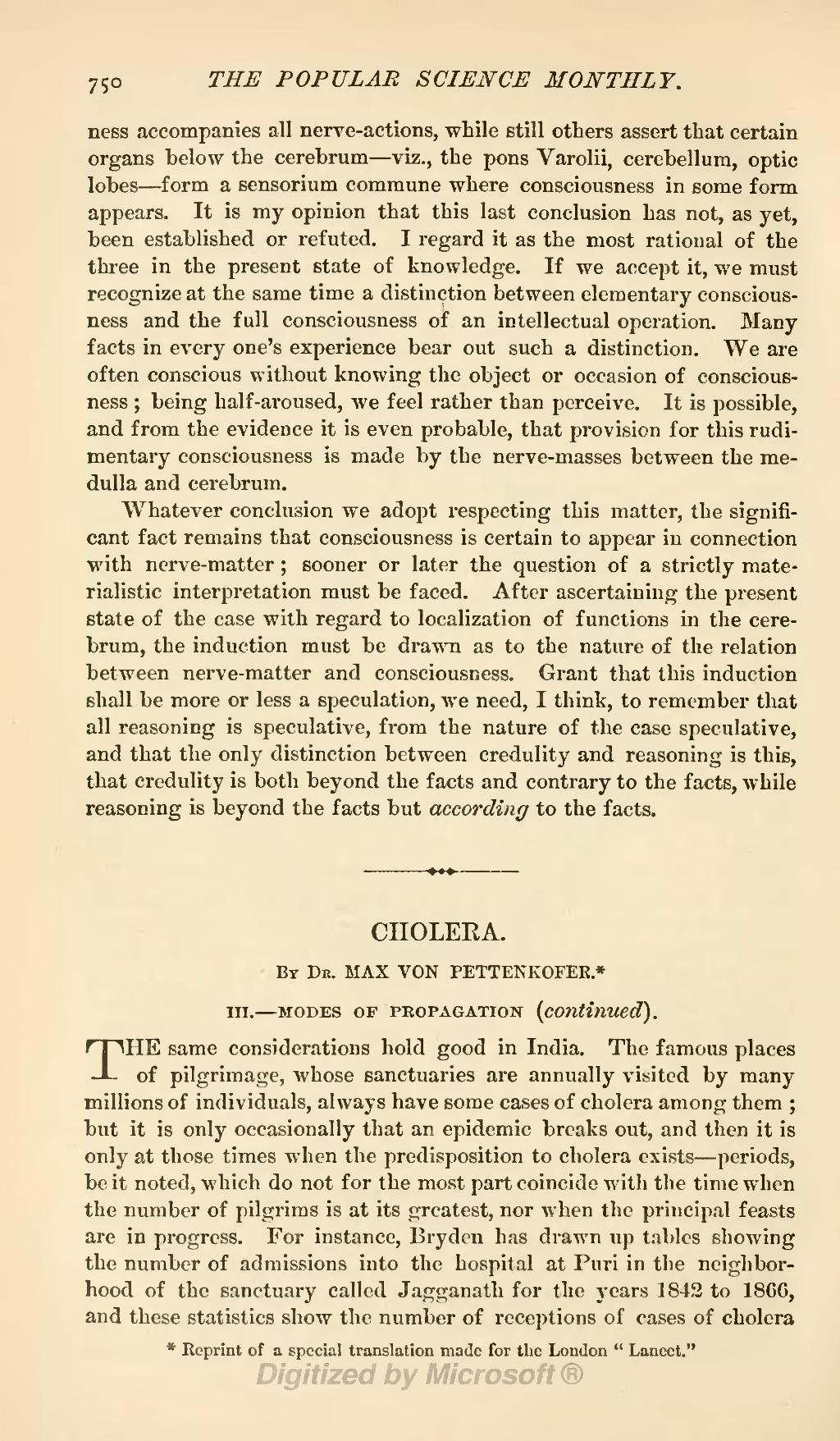ness accompanies all nerve-actions, while still others assert that certain organs below the cerebrum—viz., the pons Varolii, cerebellum, optic lobes—form a sensorium commune where consciousness in some form appears. It is my opinion that this last conclusion has not, as yet, been established or refuted. I regard it as the most rational of the three in the present state of knowledge. If we accept it, we must recognize at the same time a distinction between elementary consciousness and the full consciousness of an intellectual operation. Many facts in every one's experience bear out such a distinction. We are often conscious without knowing the object or occasion of consciousness; being half-aroused, we feel rather than perceive. It is possible, and from the evidence it is even probable, that provision for this rudimentary consciousness is made by the nerve-masses between the medulla and cerebrum.
Whatever conclusion we adopt respecting this matter, the significant fact remains that consciousness is certain to appear in connection with nerve-matter; sooner or later the question of a strictly materialistic interpretation must be faced. After ascertaining the present state of the case with regard to localization of functions in the cerebrum, the induction must be drawn as to the nature of the relation between nerve-matter and consciousness. Grant that this induction shall be more or less a speculation, we need, I think, to remember that all reasoning is speculative, from the nature of the case speculative, and that the only distinction between credulity and reasoning is this, that credulity is both beyond the facts and contrary to the facts, while reasoning is beyond the facts but according to the facts.
| CHOLERA. |
By Dr. MAX VON PETTENKOFER,[1]
III.—MODES OF PROPAGATION {continued).
THE same considerations hold good in India. The famous places of pilgrimage, whose sanctuaries are annually visited by many millions of individuals, always have some cases of cholera among them; but it is only occasionally that an epidemic breaks out, and then it is only at those times when the predisposition to cholera exists—periods, be it noted, which do not for the most part coincide with the time when the number of pilgrims is at its greatest, nor when the principal feasts are in progress. For instance, Bryden has drawn up tables showing the number of admissions into the hospital at Puri in the neighborhood of the sanctuary called Jagganath for the years 1842 to 1866, and these statistics show the number of receptions of cases of cholera
- ↑ Reprint of a special translation made for the London "Lancet."
